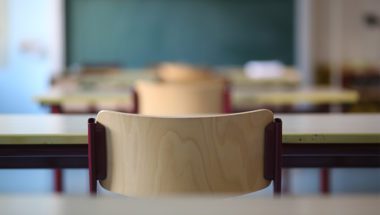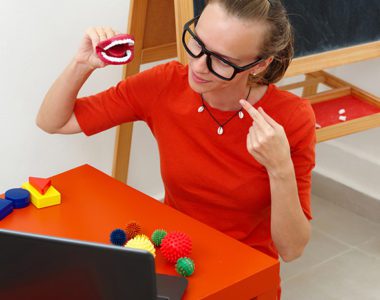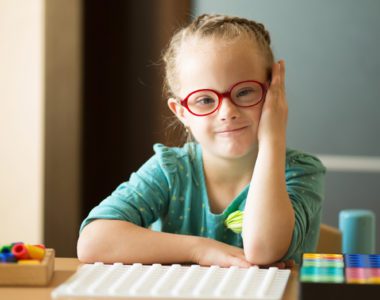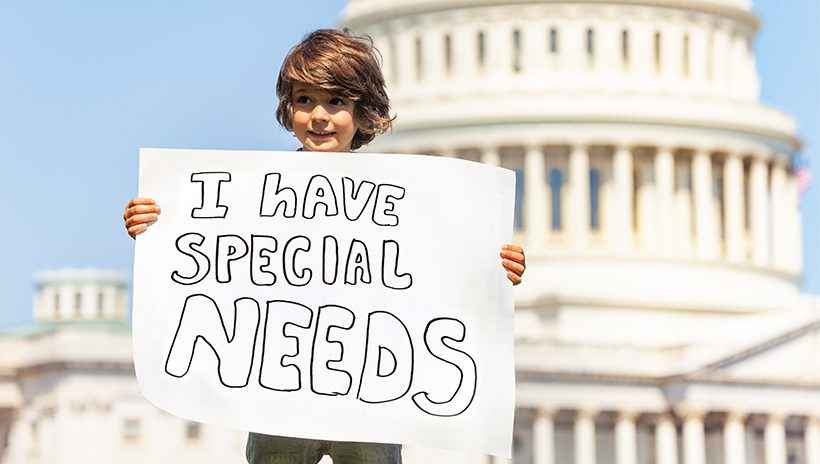On April 27, 2020, approximately one-and-a-half months into the COVID-19 pandemic, U.S. Secretary of Education Betsy DeVos announced that she would not be recommending that Congress pass any waivers regarding the Free Appropriate Public Education (FAPE) and Least Restrictive Environment (LRE) requirements of the Individuals with Disabilities Education Act (IDEA). According to Secretary DeVos, “…there is no reason for Congress to waive any provision designed to keep students learning. With ingenuity, innovation, and grit, I know this nation’s educators and schools can continue to faithfully educate every one of its students.”1
By this time, the vast majority of K–12 schools in nearly every state throughout the country had been ordered closed, and millions of students were now required to learn from home, in order to “flatten the curve.” Sure, teaching would continue to happen, and so, supposedly, would learning. As they say on Broadway, “The show must go on.” But ask any parent of a student with special needs, and they’ll gladly remind you that educating their child is about much more than ingenuity or grit.
The Show Must Go On
Secretary DeVos’s announcement essentially meant that, despite the many challenges posed by teaching and learning remotely even in the best of circumstances (or with the brightest of students), no provisions would be made to ease restrictions on K–12 school districts when it comes to meeting their students’ IEP goals and providing a free and appropriate education in a least restrictive environment. Needless to say, many parents were undoubtedly both pleased and confused—pleased because it meant that their children would seemingly not be forgotten but also confused by how this could possibly be carried out in a way that satisfies the needs of everyone involved, particularly the students. Is working at the dining room table on a battered Chromebook that sits nestled among assorted dinner dishes and is running on an unreliable Internet connection really anyone’s idea of a least restrictive environment? We’ll explore this idea in more detail a bit later, but for now, we can all agree that the shortest and most obvious answer is a resounding no.
Is working at the dining room table on a battered Chromebook that sits nestled among assorted dinner dishes and is running on an unreliable Internet connection really anyone’s idea of a least restrictive environment?Three of my four children (the fourth, our oldest, just wrapped up a semester of muddling through online versions of the classes he had been attending at our local community college, usually between marathon video game sessions) attend school in a district that took immediate action, even before the governor of my state ordered schools closed. Leading up to the closure, the teachers all attended three half-day professional learning sessions working with school and district administrators to prepare to move all teaching and learning online. In addition, my two special needs children, both of whom attend high school and are classified as Intellectually and Developmentally Delayed (I&DD), with some mild autism tossed into the mix as well, have excellent teachers who performed nothing short of a miracle in the process of shifting their entire program online. Modified programs and schedules were developed, Google meetings were set up, and anything else that needed to happen immediately did in order to ensure that my kids continued to receive the best education possible under such unique and challenging circumstances.
Thus, while Secretary DeVos’s proclamation was barely a blip on our radar, it meant an awful lot to so many parents of special needs children, who up until that point, were—to put it mildly—not happy with how things were going, although it’s quite accurate to say that plenty of parents still aren’t. In Pennsylvania, students in the School District of Philadelphia went without any classes, online or otherwise, for weeks following the state-mandated school closures. A similar scenario played out in the Chicago Public Schools, which didn’t officially begin remote learning until mid-April, about a month after all of the schools in Illinois were first ordered closed.2

Many other places throughout the country experienced similar delays in making the transition to remote learning, often resulting in students receiving no education for some period of time, including thousands of students with special needs. Even in school districts where remote learning was attempted early on, there were often significant numbers of students without reliable Internet access or the devices needed to “plug in.” In both Philadelphia and Chicago, remote classes were able to begin only after the cities’ school districts were able to provide students in need with devices such as laptops and tablets. Interestingly, the Chicago Teachers’ Union is now suing Secretary DeVos and Chicago Public Schools for failing to provide adequate resources and guidance regarding special education for the shift to remote learning.3
“Free and Appropriate” and “Least Restrictive”
At this point, it’s important to consider what “free and appropriate” and “least restrictive” might look like in an ideal remote learning situation. It’s fair to say that in a best-case scenario, students have access to reliable electronic devices and fast Internet; receive engaging and developmentally appropriate assignments they can complete at home; are in regular communication with their teacher(s) via Zoom, Google Meet, or another similar application; and have at least one supportive parent who is there to make sure everything goes according to plan and to help maintain that all-important open line of communication between school and home.
“As always open communication with families is key to student success. Each student and family situation is unique so I have been using a variety of ways to reach my students during this unprecedented time. I communicate with families in the easiest format to meet their needs, whether it be through Google Classroom, work sent home, videos, email links, phone calls, letters or social distancing visits.”
—Elaine Gizzo, Middle School Special Education Teacher, Collingswood, NJ
 Of course, this doesn’t even begin to encompass everything that special needs students might experience in an actual classroom— things like physical, occupational, behavioral, and speech therapies, one-on-one support from a certified special education teacher or qualified classroom aide, etc. And what about those spring IEP meetings where parents and teachers typically meet at school and work together to ensure that all of the goals for the current school year have been met and to come up with new ones for next year? With so many moving parts, one can hardly be blamed for feeling as though FAPE and LRE are virtually (pun most definitely intended) impossible to pull off in a remote learning environment.
Of course, this doesn’t even begin to encompass everything that special needs students might experience in an actual classroom— things like physical, occupational, behavioral, and speech therapies, one-on-one support from a certified special education teacher or qualified classroom aide, etc. And what about those spring IEP meetings where parents and teachers typically meet at school and work together to ensure that all of the goals for the current school year have been met and to come up with new ones for next year? With so many moving parts, one can hardly be blamed for feeling as though FAPE and LRE are virtually (pun most definitely intended) impossible to pull off in a remote learning environment.
How Do We Get There?
So how do we get there? Should we even try? The second question is clearly rhetorical since we all strongly agree that we must try, with the ultimate goal being to succeed. As to the first question, I think we need to consider the many different avenues that we might take to get there, all uniquely appropriate to the individual student but all sharing a few common elements.

I recently attended a webinar in which one of the panelists, an author/educator/advocate/mother of two special needs children, remarked that we all need to give each other “grace and space” to figure things out. I knew she wasn’t the originator of this phrase, and try as I might I was unable to trace its origin, but she had a very good point. While no remote learning situation can truly be 100% ideal, it’s up to all of us to give each other the grace and the space we need to figure out how to create an environment in which students with special needs can continue to learn and grow and improve despite the inconvenience of closed schools and far less access to special education teachers and their expertise. In my home school district, this happened very early on thanks to our dedicated team of special needs teachers. For others, like so many educators and parents in places like Philadelphia and Chicago who have been dealing with roadblocks beyond their control, the struggle is still ongoing and will most likely continue until the shutdowns are lifted.
Worship at the Altar of Flexibility
In the meantime, how do we navigate the rough waters of trying to provide “free and appropriate” special education services in the midst of a pandemic, especially when each child’s situation, much like their fingerprints, is unique? One important way is to worship at the altar of flexibility. Anyone who has ever worked in education knows that regardless of their age, intellect, or abilities, kids bring a different energy to class each day. Some days they’re fully strapped in and ready to ride the wave of learning, while other days it’s a struggle just getting them to crack open a textbook. Why would any of us think the rules would be different during remote learning?
Teachers need to remain flexible with everything from virtual meetings to assignment due dates to general expectations, perhaps by following the Universal Design for Learning (UDL) guidelines and allowing for multiple means of engagement, representation, and expression. For instance, instead of scheduling that Zoom meeting at a specific time each day, try all different times and see what works, or better, ask the kids what time they want to meet the next day, or still better, mix it up with some virtual meetings and some pre-recorded videos for those students who just don’t feel like joining a virtual meeting that day.

The same goes for specific tasks or assignments that students need to complete. My older child’s teacher has done a great job with this by creating a chart that her students fill in by choosing what activity they want to do that meets one of the stated goals. For example, to meet the daily fitness goal, students may either go for a walk, run/jog, do some indoor exercises, or choose from one or two other options. Being flexible by giving students voice and choice not only allows students to adjust to the “new normal” of remote instruction but it also keeps them engaged in the process and provides them with a viable and sustainable pathway toward meeting those all-important IEP goals.
The Best Way to Engage Students Who No Longer Enjoy the Benefits of Face-to-Face Instruction
Speaking of engagement, what’s the best way to engage students who no longer enjoy the benefits of face-to-face instruction from their highly qualified teachers in a classroom filled with fun centers and an assortment of gadgets and gizmos designed to help them get through the day? Without a doubt, remote instruction is not an ideal vehicle for delivering engaging lessons, but it can be done. Remember the Internet? It offers a treasure trove of options, including online puzzles and games, virtual scavenger hunts, educational videos, music-related activities, and virtual field trips that can help keep special needs students engaged—and positive learning outcomes assured—during remote learning. The choices are endless!

In addition to the ubiquitous YouTube (www.youtube.com), which is no longer bound by the shackles of firewalls and blacklisting commonly used by instructional technology folks to ban it from their school campuses, my kids’ school also uses SplashLearn, formerly SplashMath (www.splashlearn.com) for fun math games, Kids A–Z (www.kidsa-z.com) for reading activities and eQuizzes, and Typing Instructor Kids (www.typinginstructorkids.com), which teaches kids how to type through super fun adventure-type games. In addition to these, my own company, Infobase (infobase.com), offers age-appropriate, interactive content in The World Almanac® for Kids and The World Almanac® for Kids Elementary along with thousands of classroom activities in an elementary teacher resource called The Mailbox®: School & District, plus a K–12 multimedia platform called Learn360 that includes videos, audiobooks, learning songs, virtual lessons, and tons more for every subject.
The Opportunity to Learn New Life Skills in a Real-World Environment
So, what can we conclude about meeting IEP goals and delivering special education instruction remotely during a pandemic, aside from the fact that it’s a challenge? In one sense, our hands are tied because the law—speaking in the voice of Secretary DeVos—says that we must meet IEP goals, but we also have the flexibility to carve out our own path along the way, especially when dealing with such unprecedented circumstances. As someone who tries (and all too often fails) to be optimistic even in the face of difficulties, I did think of one benefit to this whole new world of remote instruction for my two special needs children, namely their ability to learn and/or improve new and existing life skills in a real-world environment, namely our home.
I’ve seen some of this play out in real time, such as when my one son’s teacher incorporated all sorts of personal hygiene requirements into his health grade, or when she required him to bake a cake or make a card for my wife in celebration of Mother’s Day. This is such a great example of making lemonade when life gives you lemons, or in this case, baking a cake when life gives you a pandemic.
“I think the most important thing is that I love my students. Any and all challenges born from the shutdown is a labor of that love. It is very difficult for me not being able to interact, in person, with my students. I miss the shared energy, the shared laughs, and the feeling I get when I see them all in our classroom. My hope is that one positive byproduct of remote learning is that my students realize and experience what I am experiencing. I miss school. I miss them.”
—Elaine Gizzo, Middle School Special Education Teacher, Collingswood, NJ
“Help will always be given for students with special needs to those who ask for it.”
I also realized that I haven’t addressed things here like physical disabilities, emotional or mood disorders, extreme behavioral issues, and other more severe situations, mostly because I personally haven’t experienced any of these with my children, but also because I don’t feel qualified to speak expertly about these topics. There are, however, plenty of organizations and resources available both locally and online that provide counseling services and emotional support for parents of children with special needs and that will also work with parents and teachers to meet a child’s physical, behavioral, and academic needs as well. To misquote Professor Dumbledore from the Harry Potter books, “Help will always be given for students with special needs to those who ask for it.”


